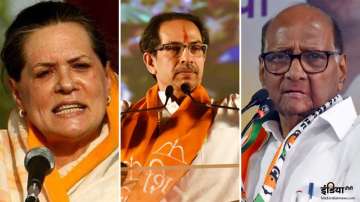Maharashtra is set to see a new government with three parties of different ideological leanings deciding to stitch an alliance - a move that surprised political observers as well as leaders in Delhi as no one had anticipated it. But sources say that a car ride in Mumbai changed the equation between once foes.
Top source in the Nationalist Congress Party told IANS that as the results of the October 21 Assembly election were out on October 24 afternoon, party supremo Sharad Pawar left his residence for a stroll and met Sena leader Sanjay Raut midway. Both then sat in a car and drove a few kilometres, before parting ways on the road.
This conversation which caught BJP leaders off guard, as initial talks between the two parties started from the same day. After this, Raut frequently met Pawar to convey the messages from Sena President Uddhav Thackeray and vice versa.
Meanwhile, Pawar maintained that he was not into any political game. But as NCP spokesman Nawab Malik said: "Pawar Sahab has checkmated the Chanakya of his time," in a reference to the name coined for Home Minister Amit Shah who has been instrumental in installing many BJP governments in states.
After an assurance from the NCP stalwart, Thackeray went ahead to the make or break point with the BJP and eventually parted ways with his long-time ally.
A major hitch came when Congress interim President Sonia Gandhi, in the first meeting out rightly refused to align with the Sena, citing ideological differences but pressure from party MLAs, tailored by senior leaders of the NCP, compelled her to rethink the decision.
Congress' Maharashtra leaders also suggested to Gandhi that the party join hands with the Sena, expressing apprehensions otherwise that some MLAs may drift away.
Gandhi's nominees Ahmed Patel, Mallikarjun Kharge and K.C. Venugopal gave the same report, while Rajasthan Chief Minister Ashok Gehlot, in whose state the MLAs were lodged, also said the same thing.
Meanwhile, the Congress leadership did not want any Karnataka-type fiasco, where its coalition government with the Janata Dal-Secular repeatedly ran into rough weather before collapsing, so it was decided to explore the possibility of an alliance and it was decided that a common minimum programme be drafted. The finalisation of the CMP was followed by negotiations on the power-sharing agreement.
